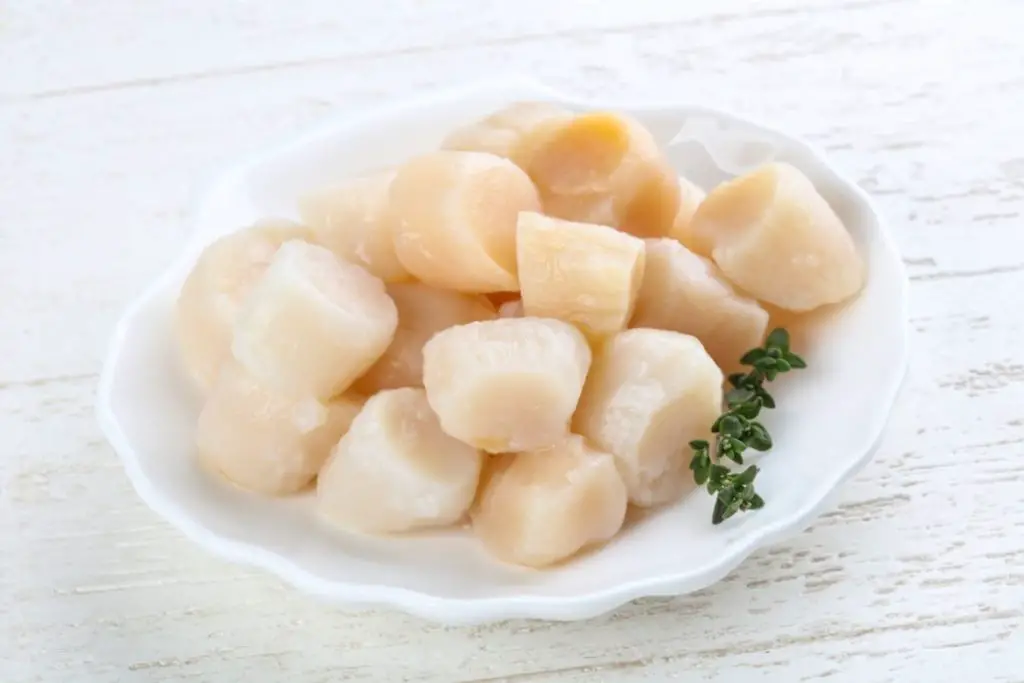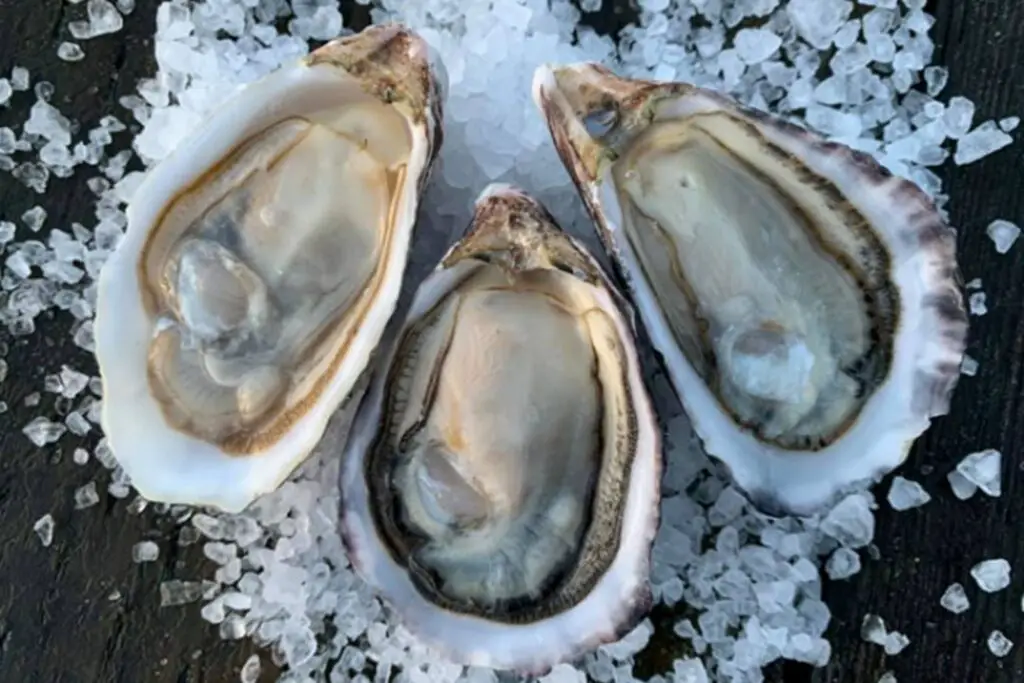
Mackerel is a popular fish known for its rich flavor and high nutritional value. Freezing mackerel allows you to enjoy this delicious seafood even when it’s out of season or not readily available. By following a few simple steps, you can effectively freeze mackerel and maintain its texture and flavor for future use. This article provides a comprehensive guide on how to freeze mackerel to ensure optimal quality when you’re ready to enjoy it.
Here’s a step-by-step guide on freezing mackerel:
- Step 1: Choose fresh mackerel
- Step 2: Clean and gut a mackerel
- Step 3: Fillet the mackerel (optional)
- Step 4: Prepare the mackerel for freezing
- Step 5: Wrap the mackerel
- Step 6: Place the mackerel in freezer-safe containers
- Step 7: Label and date the packages
- Step 8: Freeze the mackerel
- Step 9: Store in the freezer
Step 1: Choose fresh mackerel
Selecting fresh mackerel is crucial for freezing as it ensures that you start with the best quality fish, which will result in better-tasting and longer-lasting frozen mackerel. Here’s why the characteristics to look for are important:
- Bright eyes: Fresh mackerel should have clear and bright eyes. Cloudy or sunken eyes can be an indication of older or less fresh fish. Bright eyes indicate that the mackerel was recently caught or properly stored, ensuring optimal flavor and texture.
- Shiny skin: The skin of fresh mackerel should have a glossy appearance. This indicates that the fish has a good amount of natural oils, which contribute to its rich flavor. Dull or dry skin can be a sign of dehydration or poor handling, and such mackerel may not freeze well or retain its quality during storage.
- Fresh sea-like smell: A fresh mackerel should have a pleasant, clean odor reminiscent of the sea. Avoid mackerel with a strong fishy or ammonia-like smell, as this can indicate deterioration or spoilage. The smell should be mild and not overpowering, indicating that the fish is still in good condition.
Are there any safety concerns or health risks associated with freezing mackerel?
There are no significant safety concerns or health risks associated with freezing mackerel when done properly. Freezing is an effective method to preserve fish and inhibit the growth of harmful bacteria. However, it is important to ensure the mackerel is fresh and properly handled before freezing to maintain its quality and minimize any potential risks.
Can I freeze cooked mackerel, or is it better to freeze it raw?
While it is possible to freeze cooked mackerel, it is generally better to freeze it raw. Freezing raw mackerel preserves its natural texture and flavor more effectively. Cooked mackerel may become slightly drier or lose some of its tenderness when frozen, potentially impacting its overall quality.
Step 2: Clean and gut a mackerel
Properly cleaning and gutting the mackerel before freezing is essential to remove any impurities and ensure the best possible quality of the fish. Here’s why this step is important:
- Removing dirt and impurities: Rinse the mackerel thoroughly under cold running water to remove any dirt, debris, or surface impurities that may be present. This step helps to improve the overall cleanliness of the fish and prevent any unwanted flavors or odors during freezing and storage.
- Eliminating bacteria and microorganisms: Cleaning the mackerel helps to reduce the presence of bacteria and microorganisms that may be present on the surface of the fish. This is particularly important for ensuring food safety, as freezing does not kill bacteria, but rather slows their growth. Thoroughly rinsing the fish helps minimize the risk of bacterial contamination.
- Gutting the fish: Gutting the mackerel involves removing the entrails, which include the digestive tract and other organs. This step is important for both hygiene and taste reasons. The digestive tract can contain substances that may affect the fish’s flavor and quality during freezing and storage. Removing the entrails also helps to prevent the fish from spoiling more quickly.
To gut a mackerel, use a sharp knife to make a careful incision starting from the vent near the tail and working towards the head. Remove the entrails while being cautious not to puncture any organs or the fish’s flesh. This process helps to ensure that the fish is thoroughly cleaned and ready for freezing.
After gutting the mackerel, rinse it again under cold running water to remove any residual debris or traces of the gutting process. This final rinse helps to ensure that the fish is clean and free from any unwanted particles that could affect its quality.
Should I remove the scales before freezing mackerel?
It is generally recommended to remove the scales before freezing mackerel. Scales can be a source of unpleasant texture and can also contribute to freezer burn. By removing the scales before freezing, you can ensure better overall quality and prevent any potential issues with the texture and taste of the mackerel when thawed and cooked.
Step 3: Fillet the mackerel (optional)
Fileting a mackerel is an optional step that allows you to freeze the fish in individual fillet portions instead of freezing it as a whole fish. Filleting offers several advantages and gives you more flexibility in how you can use the mackerel later on. Here’s why filletting is an option to consider:
- Convenient portioning: Fileting a mackerel allows you to portion it into individual fillets, which can be more convenient for meal planning. It gives you the flexibility to thaw and use only the number of fillets you need, while keeping the remaining ones frozen for future use. This way, you can easily customize the quantity of mackerel you want to cook without having to thaw and prepare the entire fish.
- Faster thawing and cooking: Mackerel fillets tend to thaw faster and cook more quickly than whole fish. This can be advantageous when you want to prepare a meal in a shorter amount of time. Thinner fillets also tend to cook more evenly, ensuring a consistent texture and taste throughout the fish.
- Versatile cooking options: Fillets offer more versatility in terms of cooking methods. You can grill, bake, pan-fry, or even steam mackerel fillets, depending on your preference and the recipe you’re following. Fillets are also easier to marinate or season evenly, allowing for better flavor absorption.
To fillet a mackerel, lay the fish on a clean cutting board. Using a sharp fillet knife, make a long, shallow cut behind the gills, running parallel to the spine. This initial cut will act as a guide for the subsequent fileting process. Slowly slide the fillet knife along the backbone, gently separating the fillet from the bone. Repeat the process on the other side of the fish to obtain two fillets.
When fileting, it’s important to be cautious and maintain control over the knife to avoid any accidents. If you’re not confident in your fileting skills or don’t have the necessary tools, it’s perfectly fine to freeze the mackerel as a whole fish.
Step 4: Prepare the mackerel for freezing
After cleaning or fileting a mackerel, it’s important to prepare it properly for freezing. This step involves drying the fish and, if freezing it whole, leaving the scales intact. Here’s why these preparations are important:
- Removing excess moisture: Patting the mackerel dry with paper towels helps remove any excess moisture on the surface of the fish. Excess moisture can contribute to the formation of ice crystals during freezing, which can lead to freezer burn. Freezer burn can affect the texture and taste of the fish, resulting in a less desirable eating experience. By drying the mackerel before freezing, you minimize the risk of freezer burn and help maintain its quality.
- Protection with intact scales: If you’re freezing the mackerel whole, leaving the scales intact provides an extra layer of protection for the flesh. The scales act as a barrier, helping to prevent direct contact between the fish’s flesh and the cold air of the freezer. This barrier helps reduce the chances of freezer burn and helps maintain the natural moisture of the mackerel. Additionally, intact scales can help preserve the fish’s appearance and prevent the flesh from drying out during freezing and thawing.
When preparing the mackerel for freezing, gently pat the fish dry with paper towels, absorbing any moisture present on the surface. Take care to be thorough but gentle to avoid damaging the flesh.
If you’re freezing the whole mackerel, there’s no need to remove or scrape off the scales. The scales can be left intact to provide protection and help maintain the fish’s quality during freezing. However, if you’ve chosen to fillet the mackerel, scales are not applicable since they are removed during the fileting process.
Step 5: Wrap the mackerel
After preparing the mackerel for freezing, the next step is to wrap each individual mackerel or fillet before storing them in the freezer. Wrapping the fish in plastic wrap or aluminum foil provides an additional layer of protection against freezer burn and helps maintain the fish’s freshness. Here’s why this wrapping process is important:
Prevention of freezer burn: Freezer burn occurs when food is exposed to air and moisture in the freezer for an extended period. It can result in the formation of ice crystals on the surface of the fish, causing dryness, discoloration, and a change in texture. By wrapping the mackerel tightly, you create a barrier that reduces the contact of air with the fish, minimizing the risk of freezer burn and preserving its quality.
Preservation of freshness: Wrapping the mackerel individually helps maintain its freshness during storage. The tight and secure wrapping helps to seal in the natural moisture of the fish and prevents odors from other foods in the freezer from affecting its flavor. It also helps to protect the fish from potential cross-contamination and maintain its overall quality.
When wrapping the mackerel, choose either plastic wrap or aluminum foil. Plastic wrap is a common choice as it is transparent, allowing you to easily identify the contents. Aluminum foil provides a thicker and more protective layer. Ensure that the wrapping is tight and secure, minimizing air exposure to the fish.
For individual mackerel or fillets, wrap them tightly by starting at one end and folding the wrap or foil over the fish, making sure to cover it completely. Seal the ends tightly to prevent any air from entering. If using aluminum foil, you can also wrap the fish in an additional layer of plastic wrap for extra protection.
Step 6: Place the mackerel in freezer-safe containers
Once the mackerel is wrapped individually, the next step is to store them in freezer-safe containers or freezer bags. Proper storage containers help maintain the quality of the fish during freezing and storage. Here’s why this step is important:
Protection against freezer burn: Freezer-safe containers or bags provide an additional layer of protection against freezer burn. By placing the wrapped mackerel in these containers, you create a barrier that further reduces air exposure, minimizing the risk of freezer burn and preserving the fish’s quality.
- Air removal: It is essential to remove as much air as possible from the containers or bags before sealing them. Air contains moisture, which can lead to the formation of ice crystals and contribute to freezer burn. Removing excess air helps maintain the freshness and texture of the mackerel during freezing.
- Maximum freshness with vacuum sealing: If you have access to a vacuum sealer, it is an excellent option for maximum freshness. Vacuum sealing removes all air from the packaging, creating an airtight seal around the mackerel. This method helps preserve the fish’s flavor, texture, and nutritional value for an extended period. Vacuum-sealed mackerel can also prevent the transfer of odors and flavors from other foods in the freezer.
- When placing the wrapped mackerel in freezer-safe containers or bags, ensure that they are airtight and designed for freezer use. If using containers, choose those specifically labeled as freezer-safe or airtight. For freezer bags, select thick, durable bags designed for freezing.
If using containers, arrange the wrapped mackerel inside, leaving enough space between each piece to prevent them from sticking together. Press down gently to remove any remaining air before sealing the containers. If using freezer bags, carefully place the wrapped mackerel inside, press out as much air as possible, and seal the bags securely.
If you have a vacuum sealer, follow the manufacturer’s instructions to vacuum-seal the mackerel individually or in portions. This method provides the best protection against freezer burn and ensures maximum freshness.
Step 7: Label and date the packages
Labeling and dating the packages of frozen mackerel is an important step to help you keep track of your inventory and ensure that you use the oldest fish first. Here’s why labeling and dating are important:
- Identification of contents: By labeling each package with the contents, you can easily identify the mackerel in your freezer. This is particularly useful if you have other frozen items or different types of fish stored together. Clear labeling ensures that you can quickly find the specific package of mackerel you need when you’re ready to thaw and cook it.
- First-in, first-out (FIFO): Labeling the packages with the date of freezing allows you to practice the FIFO method, which means using the oldest items first. As fish can degrade in quality over time, it’s important to consume the mackerel within a reasonable time frame. By labeling the packages with the date of freezing, you can easily identify which packages were frozen first and prioritize their use. This helps you maintain an organized freezer and ensures that you enjoy the mackerel at its best quality.
- Efficient meal planning: Knowing the date of freezing helps with meal planning and inventory management. It allows you to keep track of how long the mackerel has been frozen, enabling you to plan your meals accordingly. This way, you can make sure you use the fish within the recommended storage time for optimal taste and freshness.
When labeling the packages, use waterproof markers or labels that will not smudge or fade over time. Clearly write the contents, such as “Mackerel” or “Frozen Mackerel,” on each package. Additionally, write the date of freezing, including the month, day, and year. Place the labels in a visible area of the package for easy identification.
Step 8: Freeze the mackerel
After properly packaging the mackerel, the next step is to place the sealed containers or bags in the freezer. Freezing the fish at the correct temperature is crucial for maintaining its quality. Here’s why proper freezing is important:
- Temperature control: It’s essential to set your freezer temperature at 0°F (-18°C) or below to ensure proper freezing of the mackerel. At this temperature, the fish will freeze quickly, which helps preserve its texture, flavor, and nutritional value. Freezing at temperatures higher than 0°F (-18°C) can result in slower freezing, leading to the formation of larger ice crystals, which may affect the quality of the fish upon thawing.
- Quality retention: The quicker the mackerel freezes, the better its quality will be when thawed. Rapid freezing helps minimize cell damage and prevents the formation of large ice crystals. These factors contribute to maintaining the natural texture and flavor of the fish. Quick freezing also helps preserve the essential nutrients present in the mackerel.
- Long-term storage: Freezing at the proper temperature allows you to store the mackerel for an extended period. By maintaining the freezer temperature at or below 0°F (-18°C), you can keep the fish frozen, preventing bacterial growth and spoilage. This ensures that the mackerel remains safe to consume and maintains its quality over a more extended period.
To freeze the mackerel, place the sealed containers or bags in the coldest part of your freezer. If you have a dedicated freezer, use that for optimal freezing conditions. Ensure that the packages are arranged in a way that allows air to circulate around them, promoting uniform freezing.
It’s worth noting that overcrowding the freezer can hinder proper airflow and slow down the freezing process. If you’re freezing a large quantity of mackerel, consider spreading them out across multiple freezer shelves or using freezer racks to create space between the packages.
Step 9: Store in the freezer
After freezing the mackerel, it’s important to store it properly in the freezer to maintain its quality and prevent flavor transfer. Here’s why proper storage is important:
- Avoid flavor transfer: Storing the frozen mackerel in a dedicated section of the freezer helps prevent flavor transfer from strong-smelling foods. Fish tends to absorb odors easily, so it’s important to keep it away from foods with strong aromas, such as garlic, onions, or heavily seasoned items. This ensures that the mackerel retains its own natural flavor and doesn’t take on unwanted odors.
- Organize for easy access: When storing multiple packages of mackerel, it’s beneficial to organize them in a way that allows easy access to the oldest fish. This follows the FIFO (first-in, first-out) method and ensures that you use the oldest mackerel first to maintain freshness and quality. By organizing the packages, you can easily identify and retrieve the desired package without disturbing the others.
To store the frozen mackerel properly:
- Dedicate a section: Allocate a dedicated section or shelf in your freezer for storing the mackerel. This allows you to keep it separate from other items and minimizes the risk of flavor transfer.
- Choose a suitable location: Place the mackerel in a location that maintains a consistently cold temperature. Avoid storing it in the freezer door or near areas where temperature fluctuations are more likely to occur, such as near the freezer vents.
- Avoid overcrowding: Ensure that the packages of mackerel are not overcrowded, as this can impede proper airflow and slow down freezing and thawing. Leave enough space between packages for air circulation.
- FIFO organization: Arrange the packages in a way that allows easy access to the oldest fish. One way to do this is by placing the newest packages at the back of the freezer and the older ones towards the front. This way, you can easily retrieve the oldest mackerel for consumption while maintaining the order of your freezer inventory.
How long can I store frozen mackerel?
Frozen mackerel can be stored for up to 3 months in a standard home freezer without significant loss in quality. It is important to properly package the mackerel to minimize exposure to air and prevent freezer burn. If stored in a deep freeze or a freezer with a consistent temperature of -18°C (0°F) or below, mackerel can potentially be stored for up to 6 months or longer. However, for the best taste and texture, it is recommended to consume the frozen mackerel within the first 3 months of freezing.
Other related questions
How do I properly thaw mackerel?
To properly thaw mackerel, it is best to do it slowly in the refrigerator. Place the frozen mackerel in a sealed container or wrap it tightly in plastic wrap to prevent any moisture loss. Allow the fish to thaw in the refrigerator for approximately 24 hours or until completely thawed. Avoid thawing mackerel at room temperature or using hot water, as these methods can promote bacterial growth and compromise the quality of the fish.
Can I refreeze previously thawed mackerel?
It is generally not recommended to refreeze previously thawed mackerel. When mackerel is thawed, moisture can be lost and bacteria can begin to multiply. Refreezing the fish can further degrade its quality and increase the risk of bacterial contamination. However, if the mackerel was thawed in the refrigerator and maintained at a safe temperature (below 4°C or 40°F), it can be refrozen as long as it hasn’t been left at room temperature for an extended period. It is always best to consume thawed mackerel promptly rather than refreezing it.
How do I know if my frozen mackerel has gone bad?
There are several signs to look for to determine if frozen mackerel has gone bad. Firstly, inspect the fish for any visible signs of freezer burn, such as white or grayish discoloration and dry, shriveled patches. Additionally, a strong, unpleasant odor is a clear indicator of spoilage. If the texture of the mackerel feels mushy, slimy, or overly soft, it is likely spoiled. Trust your senses of sight, smell, and touch to assess the quality of the frozen mackerel, and when in doubt, it is best to discard it to avoid any potential foodborne illnesses.
Can I use frozen mackerel with the fresh ones?
Yes, you can use frozen mackerel alongside fresh ones in certain dishes. However, it’s important to consider the texture and moisture content of the fish. Frozen mackerel tends to have a slightly different texture and may release more moisture when cooked compared to fresh mackerel. It’s advisable to thaw and drain the frozen mackerel before using it in recipes to minimize excess moisture. Additionally, the flavor of frozen mackerel may differ slightly from fresh mackerel, so keep that in mind when incorporating it into your dishes.
How does freezing affect the texture and flavor of mackerel?
Freezing can have some effects on the texture and flavor of mackerel. The texture of frozen mackerel may become slightly softer or more delicate compared to fresh mackerel. Additionally, freezing can cause minor flavor changes, with some individuals noticing a subtle difference in taste between fresh and frozen mackerel. However, when properly stored and thawed, the impact on texture and flavor is generally minimal, and frozen mackerel can still be delicious and enjoyable.








